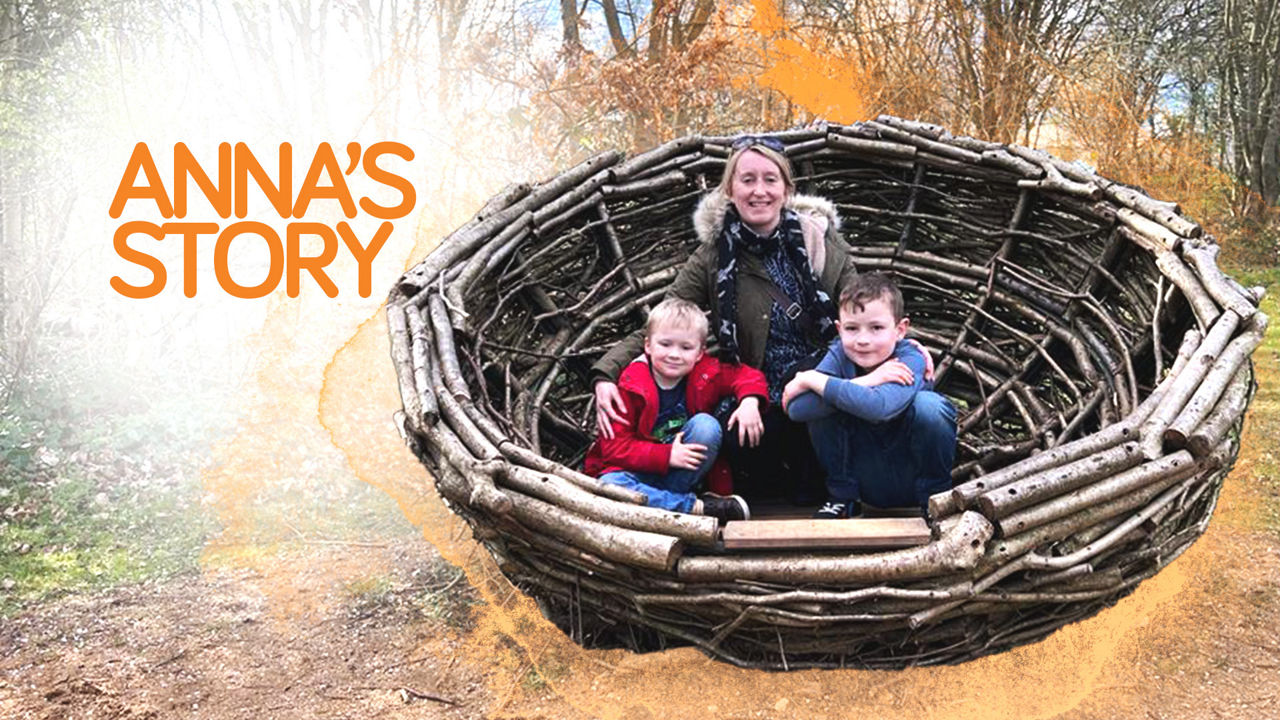
#EpilepsyandMe - Anna's Story
Anna gave birth to Harry eight years ago, and it wasn’t long after he was diagnosed with GLUT1 deficiency. This is the story of how the ketogenic diet changed their lives.
Harry was five months old when he was first diagnosed with GLUT1 deficiency. At the time, we were incredibly lucky that he was diagnosed so young, because most people don’t get their diagnosis until they’re a lot older.
A strange kind of absence
I remember the day when I first thought there might be something going on - it was my birthday. He was on the changing mat, and he just did this very odd thing: his eyes sort of froze and his arms shot out at his sides. It was just a shock that made me think “Oh, that’s a bit weird,” and I didn’t think anything else of it; I assumed it might be the cold or something.
But then it started happening more and more - eyes glazing over, arms shooting out - and then they started to last a bit longer. He would have a sort of seizure, and a strange kind of absence. I didn’t know what they were called at the time, but these were myoclonic seizures. I knew something odd was going on, so we took him to our local GP, and our GP advised us to take him to hospital. And it all started from there..
The lights go on
We were very lucky because it was probably only one month between them starting and Harry getting a diagnosis. By that point he was having hundreds of seizures every day - there were so many of them. We presented at A&E and they sent him to have an EEG (electroencephalogram) which showed there was almost constant seizure activity in his brain. From there we were sent to another hospital, which is when they started running all sorts of tests to see what might be going on. It was just terrifying, because they’re looking at all sorts of things it could be, meanwhile I’m googling away online even though I know I really shouldn’t.
One of the things they did was a lumbar puncture, and that’s when the doctor said she felt that Harry’s spinal fluids might have low levels of glucose, and he might have a condition called GLUT1 - something we had never heard of. They needed to do some more tests to determine if it definitely was GLUT1, but the doctor said we might as well start Harry on the ketogenic diet straight away; if it was the right thing, then great, but if not, there was still no harm in trying it.
Honestly, it was like the lights went on. As soon as he started the diet, the change was almost overnight, because glucose was finally getting into his brain. There was this instant change in his face, as if the lights had sort of come on in his head - it was amazing. This was all before we’d even had the official diagnosis; just a few days after he started the diet, his ketones were up and his seizures simply stopped - and they never really came back..
From relief to recipes
The immediate feeling was relief. Relief that we knew what the issue was, and that of all the things we’d been worried it might be, this one wasn’t a life-limiting condition. This is something that can be managed with the ketogenic diet. At that point, however, I didn’t fully understand what going on the ketogenic diet meant. Because he was five months old, he just went on keto milk - so I wasn’t making ketogenic food or anything at that stage. I just thought, “Oh, okay then, I’ll stop breastfeeding,” and then it took me quite a while to realise the impact the diet would have on our lives.
At the start, it was quite a lot to get my head around because everything has to be so precise. We were given this calculator called an EKM (Electronic Ketogenic Manager) and you get this prescription that tells you he needs to have this many grams of carbohydrates and this many grams of protein in every meal. There were very few children as young as Harry on the diet, so we were in close contact with Nutricia all the time for information on what I should be feeding him. Since then, Nutricia has brought out cookbooks for weaning babies onto the ketogenic diet, but there wasn’t anything like that when we started, so I was sort of making it up as I went along, having to puree vegetables with lots of butter and oil. The upside is that Harry has never known anything else, so in some ways that makes things easier - he’s never had a chip or a crisp, and he’s never had any of his favourite foods taken away from him.
We had a great dietitian from the brilliant team in London, and at the same time I was always emailing Mo, who is the keto chef from Matthew’s Friends (the ketogenic diet charity). Mo came up with little meals like Harry’s eggy bread, which is still his favourite food all these years later! So they helped us a lot. They have an advice line and whenever I called it I’d get a call back from Emma (Williams, founder of Matthew’s Friends) within minutes, and she is just amazing. You essentially find you’re part of a little community, because there’s not many people with GLUT1 - but funnily enough one of the families only lives 10 or 15 minutes away from us. So we got to know them quite well, and it’s very supportive because it’s such a small rare disease community. The internet is great for that as well; you can become part of a group, share recipe ideas, talk about symptoms and things like that.
Planning for success
Planning is the biggest part of the diet. Because every meal is prepared and precisely weighed out, we never have the option of just sauntering into a shop to get Harry some lunch. So planning has had the biggest impact on day-to-day life, and it means you can’t really be spontaneous. If I haven’t prepared his food I’m always thinking, what does he need? What’s the plan? What’s in the kitchen? If we go on holiday we stay in self-catering and I’ve got everything prepped. We don’t go abroad - I know lots of people do, but I worry about stuff like that. At school, he has someone that sits with him while he has his food, and we monitor his ketones to see how he’s doing.
Most of the impact on Harry is physical. His brain is doing really well, I think because he started the diet so young. At school he’s meeting all these milestones: he’s brilliant at reading, he loves maths and numbers, he’s working at the level of the other kids in year 3. And I believe that is 100% because of the ketogenic diet, because that’s his only management. But he does have the physical impacts of GLUT1, so his processing is slow and his speech is slow - and that’s hard. It’s hard with kids because they’re so excited all the time, and it’s difficult for them to slow down to really listen to him. That frustrates Harry, because if you get to know him you’d understand what he’s talking about - which is normally Marvel or Star Wars or something! So that can be a challenge, and he struggles with his motor skills and gets tired easily. He can run around like crazy in a playground, but then his legs might sort of drop when he runs out of puff. Those kinds of things. .
A wonderful, wonderful option
For GLUT1 - as opposed to other types of epilepsy - the ketogenic diet is the only option. It was the only thing we were able to do, and I was excited that there was a diet option that might - and did - work, because the medication he was initially put on was making him very drowsy. So I just want more people to know about the ketogenic diet, because it has been such a wonderful option for us. We were very lucky, because we were at a big London hospital and they thought to test for GLUT1; they were incredibly quick. But I know that’s not everyone’s experience, and lots of people with epilepsy aren’t even told about the diet or given that opportunity. It can be so effective, and what’s the harm in trying it? Too many people aren’t talking about it, or think it will be awful food, and it’s not like that. There’s actually a lot of Harry’s food I would quite like to eat!
I want people to know that the ketogenic diet is nowhere near as hard as people often think it will be, and the difference it can make is absolutely massive. There are tonnes of recipes out there now, and a huge amount of support from charities. There is an extremely supportive community out there that makes it so much easier for your child to go onto a diet that can transform your lives. I just wish more people knew about it, more doctors prescribed it, and people weren’t led to think it’s going to be incredibly difficult.
It can feel like a lot at the beginning, but just start slowly with a couple of recipes - it doesn’t matter if your kid eats the same thing for a week, just while you’re getting going. You need to be kind to yourself. But it’s a wonderful, wonderful management option that can really work - especially for people who are finding the seizures aren’t helped by medication.
Disclaimer: The views/opinions presented are solely those of the individual and do not necessarily represent those of Nutricia.
